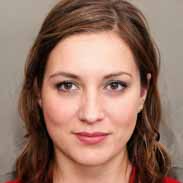EPID 4070: Test 2 – Flashcards
Unlock all answers in this set
Unlock answersquestion
Ecologic study
answer
Study where the unit of analysis is the group, not the individual; can be used for generating hypotheses; level of exposure for each individual in the unit studied is unknown
question
Ecologic comparison study
answer
involves an assessment of the correlation between exposure rates and disease rates among different groups over the same time period
question
Ecologic trend study
answer
involves correlation of changes in exposure with changes in disease within the same community, country, or other aggregate unit
question
Ecologic fallacy
answer
observations made at the group level may not represent the exposure-disease relationship at the individual level
question
Ecologic fallacy
answer
occurs when incorrect inferences about the individual are made form group level data
question
Cross-sectional study
answer
study during a single period of observation where exposure and disease histories are collected simultaneously; exposure and disease measures obtained at the individual level
question
Case-Control Studies
answer
study in which one group has the disease of interest, and a comparable group is free from the disease
question
Case-Control Studies
answer
study that identifies possible causes of disease by finding out how two groups (one control and one case) differ with respect to exposure to some factor
question
Temporality
answer
refers to the timing of information about cause and effect
question
Cohort
answer
a population group, or subset thereof, that is followed a period of time
question
Cohort
answer
study in which members experience a common exposure associated with a specific setting or they share a non-specific exposure associated with a general classification
question
Wade Hampton Frost
answer
popularized cohort analysis method--arranged tuberculosis mortality rates in a table with age on one axis and year of death on the other
question
life table method
answer
gives estimates for survival during time intervals and present the cumulative survival probability at the end of the interval
question
cohort life table
answer
shows the mortality experience of all persons born during a particular year
question
Period life table
answer
enables us to project the future life expectancy of persons born during the year as well as the remaining life expectancy of persons who have attained a certain age
question
YPPL
answer
years of potential life lost
question
DALYs
answer
disability-adjusted life years
question
YPLL
answer
computed for each invididual in a population by subtracting that person's life span from the average life expectancy of the population
question
DALYs
answer
adds the time a person has a disability to the time lost to early death
question
Cohort study
answer
start with a group of subjects who lack a positive history of the outcome of interest and are at risk for the outcome; include at least two observation points
question
Population-based cohort study
answer
study that includes either an entire population or a representative sample of the population
question
Exposure-based cohort study
answer
study conducive for rare exposures--certain groups, such as occupational groups, may have higher exposures than the general population to specific hazards
question
Prospective cohort study
answer
study characterized by determination of exposure levels at baseline (present) and follow-up for occurrence of disease at some time i the future
question
Retrospective cohort study
answer
study tha makes use of historical data to determine exposure level at some baseline in the past
question
Historical Prospective Cohort study
answer
study that makes use of both retrospective features and prospective features; also known as an ambispective cohort study
question
Nested Case-Control Study
answer
a type of case control-study in which cases and controls are drawn from the population in a cohort study
question
relative risk
answer
(incidence rate in the exposed)/(incidence rate in the unexposed)
question
Risk of disease in exposed group
answer
Ie
question
Risk of disease in unexposed group
answer
Iu
question
Risk of disease in population
answer
Ip
question
relative risk
answer
Ie/Iu
question
attributable risk
answer
Ie-Iu
question
attributable fraction
answer
(Ie-Iu)/Ie
question
population attributable risk
answer
Ip-Iu
question
Population attributable fraction
answer
(Ip-Iu)/Ip3



